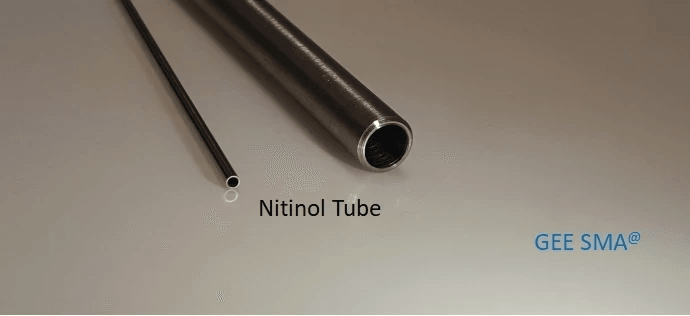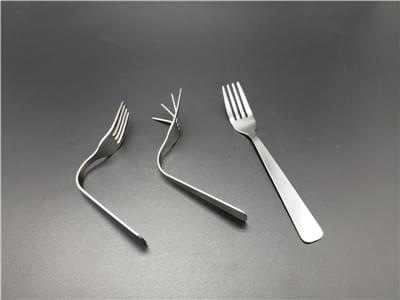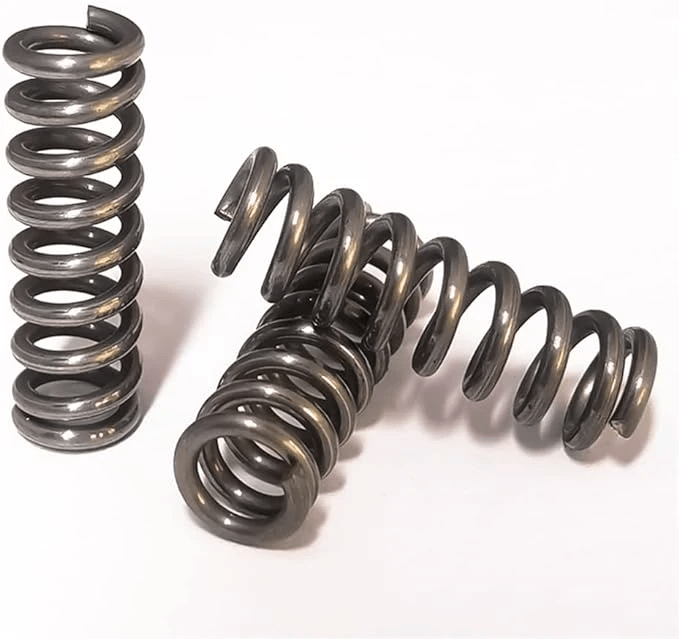Introduction
In the realm of modern medicine, micro-tech endoscopy stands out as a revolutionary technique that enhances diagnostic and therapeutic procedures. This minimally invasive approach allows physicians to visualize and treat conditions within the body with remarkable precision. Central to this advancement is the use of nitinol stents, which have transformed how various medical conditions are managed.
Understanding Micro-Tech Endoscopy
Micro-tech endoscopy utilizes advanced tools and techniques to perform intricate procedures through tiny incisions or natural openings in the body. This method not only reduces recovery times but also minimizes patient discomfort, making it a popular choice among healthcare providers. As we delve into this topic, it's essential to understand how nitinol stents play a pivotal role in enhancing these endoscopic procedures.
The Role of Nitinol Stents
Nitinol stents are made from a unique nickel-titanium alloy known for its exceptional flexibility and strength, making them ideal for various medical applications. One common question that arises is, Are nitinol stents safe for MRI? The answer is generally yes, but specific protocols must be followed due to their metallic composition. These stents are primarily used in situations where maintaining vessel patency is critical; thus, understanding what nitinol is mainly used for can help clarify their significance in endoscopic interventions.
Advancements in Medical Technology
The evolution of medical technology has led to significant improvements in patient care and treatment outcomes. Innovations like nitinol stents exemplify how materials science can enhance traditional medical devices, leading to better performance and safety profiles compared to older alternatives—prompting many clinicians to ask which is the best stent material available today? As we explore further into the integration of these advancements within micro-tech endoscopy, it becomes clear that they represent not just incremental changes but rather transformative shifts in healthcare delivery.
What are Nitinol Stents?

Nitinol stents are innovative medical devices that play a crucial role in various endoscopic procedures. Made from a unique alloy of nickel and titanium, nitinol stents have properties that make them particularly suitable for expanding and maintaining the patency of narrowed or obstructed passages in the body. Their ability to return to a predetermined shape when heated is what sets them apart from traditional stents, making them a preferred choice in modern medicine.
Composition and Properties
Nitinol is primarily composed of nickel and titanium, giving it remarkable flexibility and strength. This special alloy exhibits superelasticity, allowing nitinol stents to expand upon deployment without fracturing, which is essential during delicate procedures like endoscopy. Additionally, nitinol's biocompatibility ensures that these stents can safely reside within the body without causing adverse reactions.
The question Are nitinol stents safe for MRI? often arises due to their metallic composition. Fortunately, most nitinol stents are designed to be MRI-compatible, allowing patients to undergo magnetic resonance imaging without risking displacement or injury from the device. This compatibility enhances their utility across various medical imaging modalities.
Advantages Over Traditional Stents
One of the standout advantages of nitinol stents is their ability to adapt to the body's natural movements while maintaining structural integrity—something traditional metal stents struggle with over time. Nitinol's superelastic properties reduce the risk of complications such as migration or fracture compared to conventional materials like stainless steel or plastic. Furthermore, they tend to have a lower incidence of restenosis (re-narrowing) due to their design and material properties.
When considering which is the best stent material, many healthcare professionals lean towards nitinol because it offers superior performance in challenging environments—such as within blood vessels or digestive tracts—where flexibility and resilience are paramount. The ease with which these stents can be deployed also means shorter procedure times and improved patient comfort during interventions.
Applications in Endoscopic Procedures
Nitinol stents have found applications across various medical fields due to their versatile design and functionality. In gastrointestinal treatments, they help alleviate obstructions caused by tumors or strictures by providing consistent support where it's needed most. Urologically, these devices facilitate urine flow in cases of ureteral obstructions while minimizing complications associated with traditional options.
In cardiovascular interventions, nitinol stents are instrumental in keeping coronary arteries open after angioplasty procedures—ensuring blood can flow freely without blockage risks re-emerging soon after treatment. As advancements continue in micro-tech endoscopy, these innovative devices will likely become even more integral in enhancing patient outcomes across multiple specialties.
The Role of Micro-Tech in Endoscopy

Micro-Tech has emerged as a leader in the realm of endoscopic technology, revolutionizing how procedures are performed and enhancing overall patient care. By integrating advanced techniques with innovative materials like nitinol stents, Micro-Tech is setting new standards in minimally invasive surgeries. This section explores the pioneering techniques that define Micro-Tech's approach, the seamless integration of nitinol stents into procedures, and how these advancements contribute to improved patient outcomes.
Pioneering Techniques in Endoscopy
Micro-Tech is at the forefront of developing pioneering techniques in endoscopy that prioritize patient safety and comfort. These techniques often utilize state-of-the-art equipment combined with precision instruments, allowing for more effective diagnosis and treatment of various medical conditions. One notable advancement is the use of nitinol stents, which are known for their flexibility and biocompatibility; this makes them an ideal choice for many endoscopic applications.
With a commitment to innovation, Micro-Tech continually refines its methods to ensure that healthcare providers can deliver optimal results. The question Are nitinol stents safe for MRI? frequently arises among patients; fortunately, due to their non-ferromagnetic properties, these stents pose minimal risk during MRI scans. Thus, patients can rest easy knowing they have access to cutting-edge technology without compromising their safety.
Integration of Nitinol Stents in Procedures
The integration of nitinol stents into endoscopic procedures has transformed how various conditions are treated within the gastrointestinal tract, urological system, and cardiovascular pathways. These stents are designed to provide support while maintaining flexibility during placement and expansion—key factors that enhance procedural success rates. By utilizing nitinol stents specifically tailored for each procedure, physicians can achieve better outcomes with fewer complications.
Moreover, the unique properties of nitinol allow these stents to be deployed through smaller incisions or natural openings in the body, further minimizing recovery time for patients. As healthcare professionals increasingly adopt these advanced materials in their practices, questions like What is nitinol mainly used for? become crucial; it’s primarily utilized for creating durable yet flexible medical devices such as vascular grafts and biliary stents. This adaptability makes it one of the best choices when considering which is the best stent material available today.
Enhancing Patient Outcomes
The overarching goal of incorporating micro-techniques and innovative materials like nitinol stents is to enhance patient outcomes significantly. With reduced procedure times and lower risks associated with complications or infections, patients often experience quicker recoveries compared to traditional methods involving rigid metal options or larger incisions. Ultimately, this translates into shorter hospital stays and improved quality of life post-procedure.
Furthermore, ongoing research into optimizing designs continues to propel advancements within Micro-Tech's offerings—ensuring that practitioners have access to top-tier solutions tailored specifically for their needs while addressing common concerns about device safety during imaging tests like MRIs or CT scans. Patients who receive treatments involving nitinol stents can be confident that they’re benefiting from some of the most technologically advanced solutions available today.
In summary, Micro-Tech’s role in advancing endoscopic practices through pioneering techniques and integrating cutting-edge materials underscores its commitment towards improving healthcare delivery systems globally.
GEE SMA: Innovators in Nitinol Production

In the rapidly evolving field of medical technology, GEE SMA stands out as a pioneer in the production of nitinol stents. This company has established itself as a leader by focusing on innovation, quality, and precision engineering. By harnessing the unique properties of nitinol, they are redefining what is possible in endoscopic procedures and improving patient outcomes.
Crafting High-Quality Nitinol Stents
GEE SMA specializes in crafting high-quality nitinol stents that meet rigorous medical standards. The composition of these stents ensures they are both flexible and durable, making them ideal for various applications. With a keen focus on performance, GEE SMA’s nitinol stents offer excellent biocompatibility and adaptability during endoscopic procedures.
The question Are nitinol stents safe for MRI? often arises among healthcare professionals and patients alike. The answer is generally positive; most nitinol stents are designed to be MRI-compatible due to their non-ferromagnetic properties. This compatibility allows patients to undergo necessary imaging without concerns about their implanted devices.
Custom Solutions for Medical Needs
Recognizing that every patient's needs are unique, GEE SMA provides custom solutions tailored to specific medical requirements. Their team works closely with healthcare providers to develop specialized designs that address individual anatomical challenges encountered during procedures involving nitinol stents. This commitment to customization not only enhances the effectiveness of treatments but also contributes significantly to patient safety.
When considering What is nitinol mainly used for?, it’s clear that its versatility extends beyond just stent production; it plays a crucial role in various medical devices thanks to its shape memory characteristics and superelasticity. These features make nitinol an optimal choice for applications ranging from vascular interventions to orthopedic implants, showcasing its multifaceted utility in modern medicine.
Commitment to Quality and Customer Satisfaction
At GEE SMA, quality assurance is paramount; every step of the manufacturing process is meticulously monitored to ensure the highest standards are upheld in their nitinol stent products. Their dedication extends beyond just crafting superior devices; they prioritize customer satisfaction through transparent communication and responsive service. By fostering strong relationships with healthcare providers, GEE SMA solidifies its reputation as a trusted partner in the medical community.
As we explore which is the best stent material available today, it becomes evident that nitinol consistently ranks at the top due to its remarkable performance characteristics compared to traditional materials like stainless steel or polymer-based options. Its ability to adapt under physiological conditions makes it an exceptional choice for clinicians looking for reliable solutions in complex endoscopic scenarios.
Clinical Applications of Nitinol Stents

Nitinol stents have emerged as a game-changer in the medical field, offering innovative solutions across various clinical applications. Their unique properties and biocompatibility make them ideal for use in diverse areas, including gastrointestinal, urological, and cardiovascular treatments. As we delve into these applications, we'll explore how nitinol stents are revolutionizing patient care and outcomes.
Gastrointestinal Treatments
In the realm of gastrointestinal treatments, nitinol stents are primarily used to manage obstructions caused by tumors or strictures. These stents provide a scaffolding effect that keeps the affected passage open, allowing for improved digestion and nutrient absorption. One of the key questions surrounding their use is: Are nitinol stents safe for MRI? The good news is that most nitinol stents are MRI-compatible due to their non-ferromagnetic properties, making them a safe choice for patients requiring imaging post-procedure.
The versatility of nitinol stents extends to various conditions like esophageal cancer and biliary obstruction. Their design allows for easy deployment during endoscopic procedures, minimizing trauma to surrounding tissues. Additionally, they can be customized to suit specific anatomical needs, ensuring that patients receive tailored treatment with optimal results.
Urological Applications
When it comes to urological applications, nitinol stents play a crucial role in managing ureteral obstructions caused by stones or tumors. These stents help maintain urinary flow while reducing the risk of complications associated with traditional catheterization methods. What is nitinol mainly used for? In urology specifically, it's about providing durable support where it's needed most while enhancing patient comfort.
Nitinol's flexibility and strength make it an ideal material for ureteral stenting procedures. They can adapt to the natural curves of the urinary tract without compromising functionality or safety. Moreover, their biocompatibility ensures minimal irritation within delicate tissues—an essential factor when considering long-term placements.
Cardiovascular Interventions
In cardiovascular interventions, nitinol stents have gained recognition as one of the best materials available for vascular support due to their excellent mechanical properties and ability to return to shape after deformation (superelasticity). These features make them particularly beneficial in treating conditions like coronary artery disease and peripheral artery disease by keeping blood vessels open and improving blood flow significantly.
The question Which is the best stent material? often arises in discussions about cardiovascular interventions; many experts point towards nitinol due to its proven track record in clinical settings combined with its favorable outcomes compared to other materials like stainless steel or polymer-based options. Furthermore, advancements in drug-eluting designs have enhanced their effectiveness even further by preventing restenosis—the re-narrowing of arteries post-stenting—thus ensuring long-term success rates.
As we witness ongoing innovations in medical technology related to nitinol applications across different fields, it's clear that these remarkable devices will continue shaping future healthcare solutions.
Future Directions in Nitinol Technology

As we look to the horizon of medical advancements, the future of nitinol technology is brimming with potential. Researchers are diving deep into emerging studies that explore the capabilities and applications of nitinol stents beyond traditional uses. This exploration not only includes enhancing safety protocols but also addressing common concerns, such as Are nitinol stents safe for MRI? which remains a hot topic among both patients and practitioners.
Emerging Research and Developments
Emerging research focuses on optimizing the biocompatibility of nitinol stents, ensuring they integrate seamlessly with human tissue. Studies are underway to evaluate how these stents can be modified for specific patient needs, leading to tailored solutions that enhance their efficacy. Additionally, researchers are investigating new alloys and coatings that could improve the durability and performance of nitinol stents in various medical applications.
Furthermore, advancements in imaging techniques may soon allow for better monitoring of nitinol stent placement and function within the body. This could alleviate concerns regarding safety during procedures like MRIs while providing real-time data on patient outcomes. As we continue to push the boundaries of what is possible with nitinol technology, healthcare providers will have more tools at their disposal to ensure optimal patient care.
Potential Innovations in Stent Design
When it comes to innovation in stent design, nitinol is leading the charge with exciting possibilities on the table. Imagine self-expanding designs that adapt more effectively to changes within a patient's anatomy—this is not just wishful thinking; it's becoming a reality through advanced engineering techniques. Moreover, innovations such as drug-eluting coatings can significantly enhance the therapeutic effects of these stents by releasing medications directly at targeted sites.
In exploring Which is the best stent material?, many experts lean toward nitinol due to its unique properties like flexibility and strength combined with corrosion resistance. As manufacturers experiment with new shapes and sizes for specific applications—think smaller diameters for intricate vascular interventions—the versatility of nitinol continues to shine through. These advancements promise not only improved functionality but also reduced complications post-procedure.
The Future of Micro-Tech Endoscopy
The integration of nitinol technology into micro-tech endoscopy heralds a new era in minimally invasive procedures. With ongoing advancements in endoscopic tools that utilize nitinol stents, we can expect enhanced visualization techniques combined with superior maneuverability during surgeries. This synergy between micro-tech endoscopy and innovative materials will likely lead to shorter recovery times and improved overall patient experiences.
Moreover, as healthcare systems increasingly adopt these advanced technologies, training programs will evolve alongside them, ensuring that medical professionals are well-equipped to handle these sophisticated tools safely and effectively. As we explore further into this realm, questions about What is nitinol mainly used for? will expand beyond current applications into novel territories previously thought unattainable in medicine.
In conclusion, as we venture forth into this promising future filled with innovations surrounding nitinol technology, especially regarding its role within micro-tech endoscopy—we find ourselves at an exciting crossroads where science meets practicality in healthcare solutions.
Conclusion
As we wrap up our exploration of nitinol stents and their significant role in healthcare, it's clear that these innovative devices have transformed various medical fields. The unique properties of nitinol, combined with advancements in endoscopic techniques, have paved the way for safer and more effective treatments. In an era where patient outcomes are paramount, the impact of nitinol stents cannot be overstated.
The Impact of Nitinol Stents in Healthcare
Nitinol stents have revolutionized the landscape of minimally invasive procedures, offering solutions that are both effective and durable. Their biocompatibility and flexibility allow them to navigate complex anatomical structures with ease, making them a preferred choice among healthcare professionals. Moreover, the question Are nitinol stents safe for MRI? has been positively addressed; many nitinol stents are indeed MRI-compatible, enhancing patient care without compromising safety.
Key Players in Nitinol Technology
The market for nitinol technology is vibrant and filled with key players who continuously push the boundaries of innovation. Companies like GEE SMA stand out for their commitment to crafting high-quality nitinol stents tailored to meet diverse medical needs. As we explore “What is nitinol mainly used for?”, it becomes evident that its applications extend beyond just stenting; it plays a vital role in various medical devices aimed at improving patient outcomes across multiple specialties.
Looking Ahead: Innovations on the Horizon
The future of nitinol technology is bright, with emerging research indicating potential innovations in stent design that could further enhance their efficacy and safety profiles. With ongoing studies focusing on materials science and engineering advancements, we may soon witness even more sophisticated versions of the already impressive nitinol stent. As healthcare continues to evolve, finding Which is the best stent material? will likely lead us back to nitinol due to its unique properties and proven track record.

